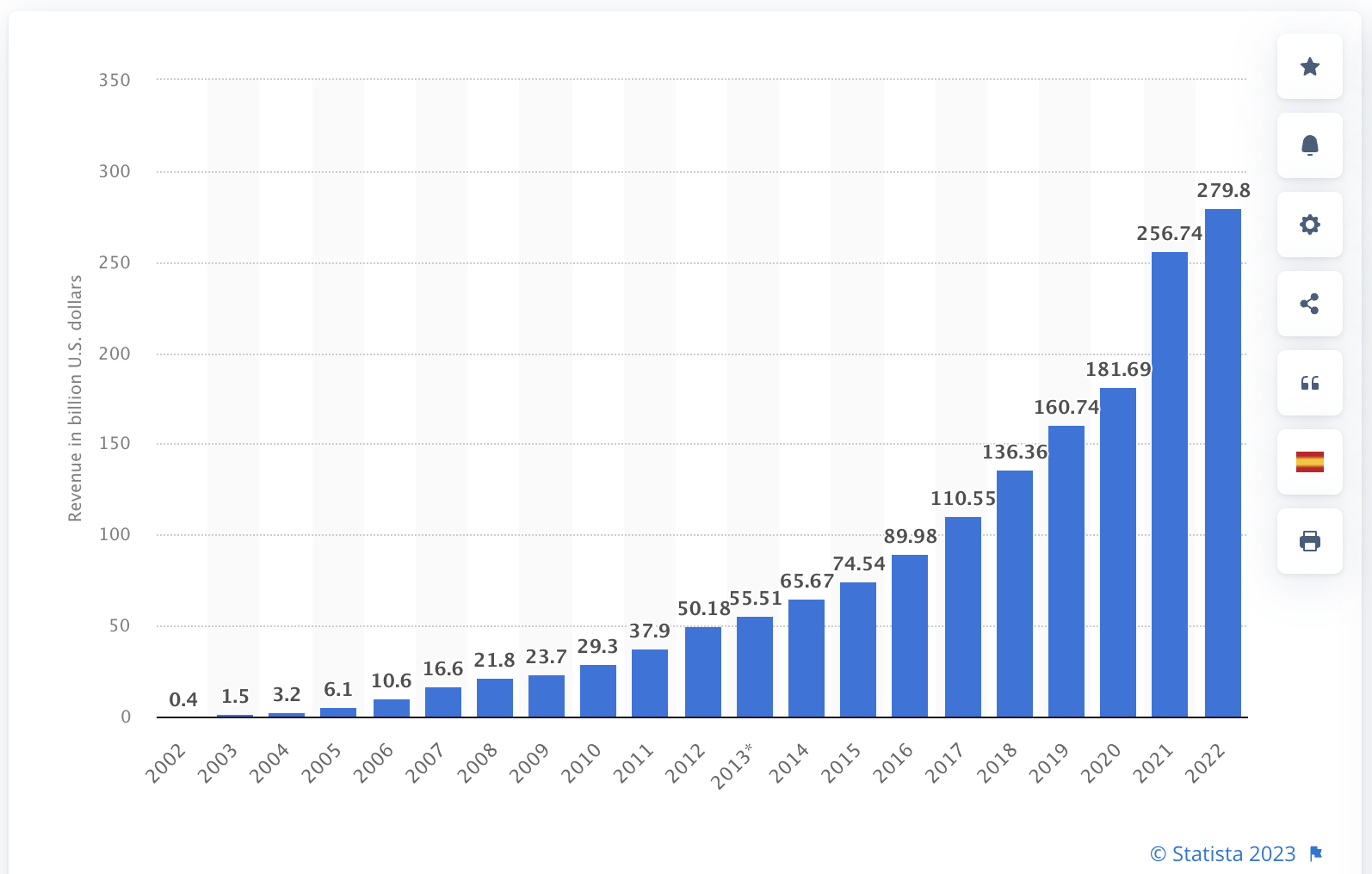What is the Google search network

Ads are triggered when users conduct specific keyword searches that align with the advertising being paid for. These ads appear at the top of search results, making them highly visible.
Read here about conducting effective keyword research.
What makes these ads particularly interesting is their reach extends to various Google services. Additionally, advertisers pay for these ads based on the number of clicks received (Cost per Click or CPC) during their active period.
Understanding the Google Search Network
The Google Search Network is a collection of websites and applications where text ads from advertisers are displayed. When users input a search query, the results are triggered on the search engine results pages (SERP). These results are determined by their relevance to the user’s query, both from organic web crawlers provided by Google and from paid ads placed at the top and bottom of the page.
Users on this network are actively seeking something – be it a phone number, a product, or a specific brand. Search Network campaigns typically aim to prompt users to take an action, such as clicking on an ad or calling a business.
The key advantage of this network is its targeting: rather than advertising to people who may not be interested in what you’re offering, these users are actively searching and more likely to convert.
The Power of Google’s Search Network
According to AdEspresso, in 2000, Google processed over 20 million organic searches daily on its search network. This massive volume led to the creation of Google AdWords (now known as Google Ads).
Today, Google remains the world’s most popular search engine.
As of January 2022, Google sites had over 270 million unique visitors in the U.S. alone, accounting for 61.4% of the search engine market share. Globally, Google also holds over 85% of the desktop search engine market share.
What do these numbers mean in real terms?
Google generates an astonishing 80% of all desktop search traffic.
It’s no wonder that an increasing number of businesses are utilizing it to advertise their products and services. In fact, Google’s annual advertising revenue in 2021 was nearly $257 billion, most of which came from search ads.

Benefits of the Google Search Network
1. High Purchase Intent:
Users on the Google Search Network typically know exactly what they’re looking for, resulting in a high purchase intent. As long as you display ads relevant to their search queries, achieving success is more straightforward. However, do not overlook the importance of bidding on keywords that align with this purchase intent (e.g., “cheap Nike shoes” vs. “shoes”). SEO is as crucial for ads as it is for your website content. Therefore, optimizing your keyword strategy to ensure your ad groups perform well is vital.
2. Measurable Results:
Advertising on Google’s Search Network through Google Ads offers complete transparency on where every penny is spent in each campaign. The Google Ads dashboard provides insights into clicks, impressions, click-through rates, cost per click, conversions, and even cost per acquisition. It’s easy to measure your Return on Ad Spend (ROAS) here. You can also customize the dashboard to display columns based on the metrics you find most valuable.
3. Budget Control:
Google gives you control over your daily or monthly budget. Whether you have $5 a day or $1,000 a day allocated, you can set your advertising budget and ensure you don’t exceed your spending limit.
The Google Display Network
The Google Display Network is a collection of websites and mobile applications where advertisers place their ads. This includes blogs, news sites, and even YouTube. The Display Network allows for a broader reach, targeting users who may not be actively searching but are still likely to be interested in your products or services based on their online behavior and the content they consume.
Types of Ads on the Google Search Network
According to Google, there are three main ad formats available on the Search Network:
1. Text Ads, Dynamic Search Ads, and Call-Only Ads:
These can appear under the “Ad” label at the top or bottom of the search results page and, in some cases, as “Google Ads” on associated search sites. While text is the primary format, these ads can also include additional information like phone numbers and locations, appearing on Google Maps, Google’s search results page, etc.
2. Shopping Ads:
Tagged as “Sponsored,” these ads display products for sale related to users’ search keywords.
3. Video or Image Ads:
Since the Search Network includes various Google services, it also supports advertising in these formats, which can appear in search engines, associated sites like YouTube, or Google Images.
“Associated search sites” extend the reach of ads on the Search Network, as they can also appear on external sites beyond Google. In this scenario, ads might show up in site directories, search results of other search engines, or related pages appearing in user search results, etc.
The Search Network targets users actively seeking specific information, needs, products, etc., catering to a particular target audience.
When to Use Google’s Search Network
Advertising on the Search Network is the most common and well-known form of PPC advertising. By selecting this network, your ads are eligible to appear in Google’s SERPs. If you want to broaden your reach, you can extend your targeting to include “search partners,” comprising smaller search engines like AOL.
This advertising format is incredibly effective because it focuses on an active searcher on a mission to find something. As seen in the example, the searcher is looking for a plumber in Virginia. Upon entering the query, both paid ads (highlighted in red boxes) and organic listings appear. Of course, plumbers could rely on their organic (i.e., free) listings, but they are likely to be more successful if they run ads on the Search Network. Not only are the paid ads more robust, but they also allow plumbers to include extensions with additional links, phone numbers, and addresses. Because the Search Network connects advertisers with people actively searching for their products, search campaigns often yield more conversions than display campaigns.
6 Reasons to Use the Google Search Network
1. To Supplement Organic Traffic:
For businesses that can’t solely rely on SEO for results, search advertising is a valuable short-term strategy while building organic presence. Unlike organic results, which focus on comparative content, search ads quickly direct people to solutions.
2. To Capture High-Quality Leads:
Search ad campaigns allow for precise targeting using various keyword matching types, along with negative keywords to prevent ads from triggering on irrelevant searches. This precision enables ads to align closely with user search intent, as demonstrated in this high-intent search ad example:
3. When Targeting a Local Audience:
For local services seeking a nearby audience, search ads are optimal. Reaching a global audience with display ads isn’t as beneficial for businesses with a small, specific target audience.
4. If You Have a Short Sales Cycle:
Search ads are ideal if your product or service has a short sales cycle, eliminating the need for continued remarketing to those who have previously engaged with your brand.
5. To Promote Emergency Products:
For “urgent” or “emergency” services (plumbers, locksmiths, tow trucks, emergency vets, electricians, etc.), search ads are advisable. People are unlikely to engage with these services while reading a blog or scrolling through social media but will actively search for them during an emergency.
Note: These services are often searched on mobile devices. Use call extensions to facilitate easy contact, as shown in the example ad.
6. If You Have a Limited Budget:
For startups or campaigns with a lower budget, search engine advertising can be more beneficial. PPC advertising allows payment per click or per thousand impressions. Bidding on highly relevant keywords gives more control over reach, yielding more qualified leads, higher conversion rates, and better ROI. PPC efforts are easier to measure and justify, and mastering this can lay the groundwork for expanding to the Display Network.
Juan Esteban Yepes
